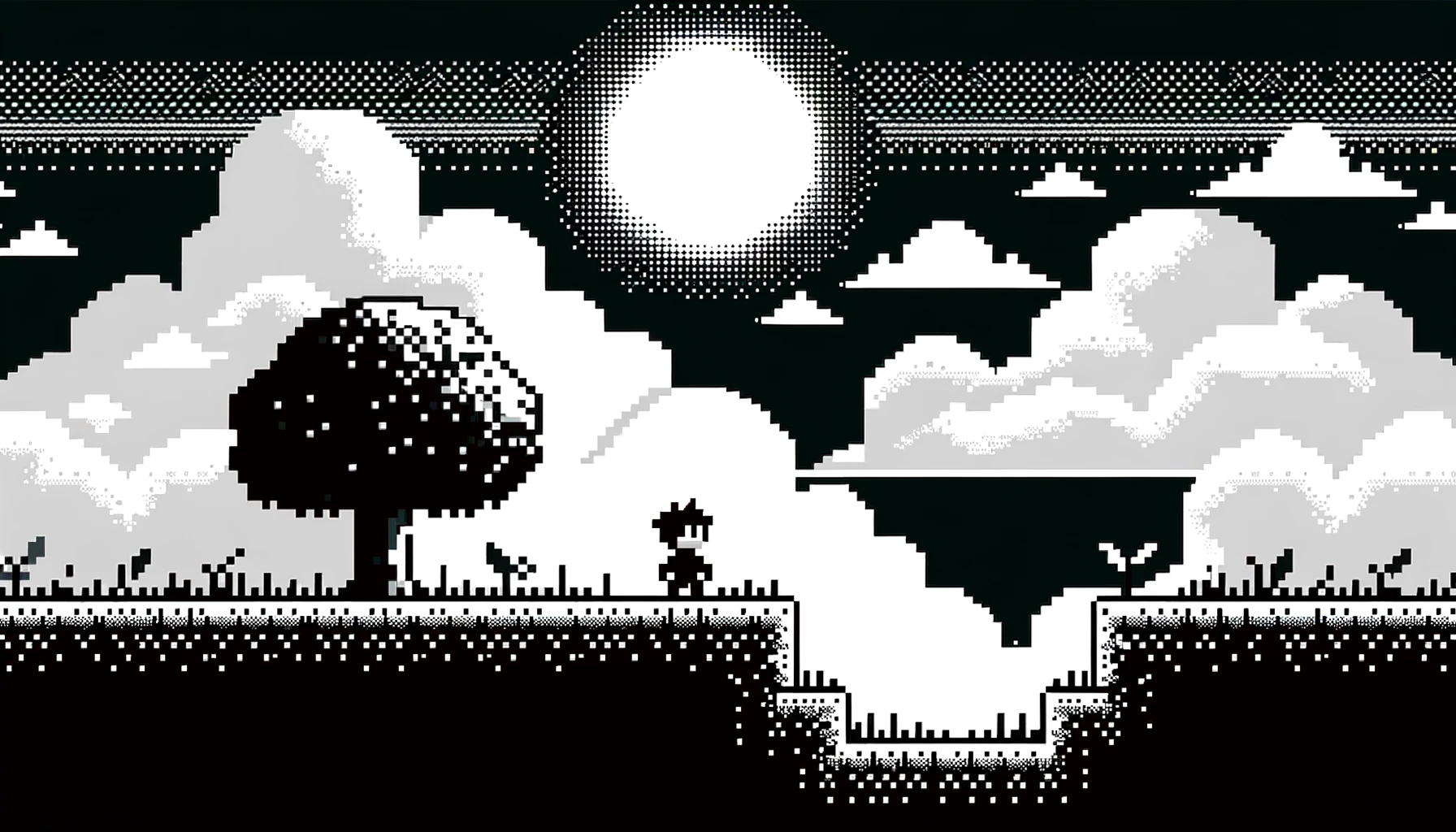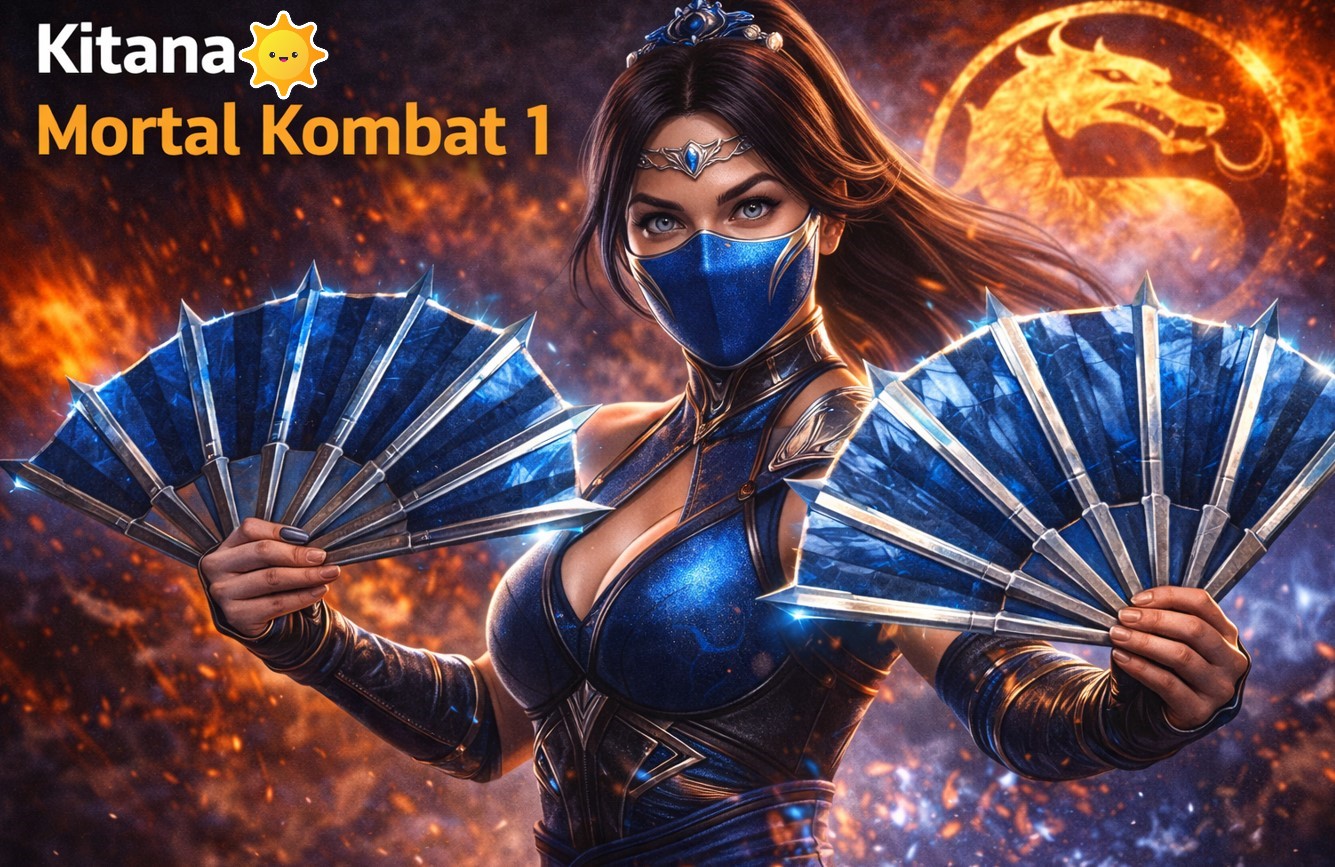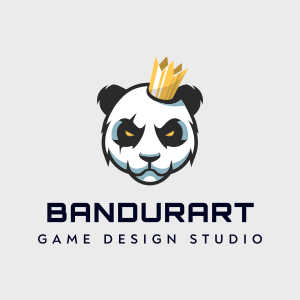The Monochrome Beauty Of 1 Bit Game Projects
The gaming industry always appreciated retro-style games. Different retro-style games are on the rise these days. But even in the realm of pixel art and PS1-styled graphics in video games, there are projects with distinctive 1-bit visuals. If you are really into indie projects, then you have probably come across a 1 bit game. Think of “Return of the Obra Dinn” or “Downwell” when they talk about monochrome art in video games.
The idea behind 1 bit games comes from those times when the developers were limited in creating their video game projects due to hardware limitations. Right now, the rise of monochrome visual style mostly occurs due to the sentimental longing for classic games that some game designers and developers had seen during their childhood days. At least, that is how some of BandurArt’s developers explain the phenomenon of popular monochrome indie games released in the 21st century.
We see the perspective in this game development that is why we specialize in 2D character design to help build 1-bit monochrome games.
![]()
What Is a 1 Bit Game Graphics?
The term is nothing but a reference to the use of binary images in retro video game projects. According to Wikipedia and common sense, a binary image usually consists of pixels of one color – mostly black and white, though yellow or green shades are also quite popular. Such binary images are also called bi-level images, while the visual art made of one or two colors is more commonly referred to as 1 bit pixel art. In simple terms, this denotes that every pixel is stored as a single bit – 0 or 1. Such visual concept has many names but the meaning is the same.
Every 1 bit game is built on the concept of one-bit pixel art by putting together two-colored pixels one after another. This method has grown from basic starting points as the first arcade games to become a complex artistic concept in contemporary indie game design that stirs emotions and inspiration.
Surely, novice developers creating projects with 1-bit pixel art graphics should understand that it can be quite challenging because of the limits of two colors. Designers need to think about contrast, composition, and usability to make sure that the visuals are both nice-looking and easy to comprehend in the in-game setting.
However, such efforts are usually quite rewarding because the use of 1-bit graphics gives a special, minimalistic look to any carefully crafted game. This style promotes creativity and artistic expression because it makes developers find new methods for expressing mood, atmosphere, and environmental storytelling with the simple but powerful visuals seen in 1-bit graphics.
The visual prominence and straightforwardness of 1-bit graphics can stir feelings of nostalgia while also expanding the borders of game designing despite the limited art style.
If a developer wants to understand and use the special visual style of 1-bit graphics, they must first learn about their history, technical details, and the visual choices used by 1 bit game art experts. That is how the BandurArt game designers prefer to do the research.

You can also check the Reddit thread dedicated to understanding the concept of 1 bit games.
What Tools and Software Do 1 Bit Game Developers Use?
Just like with any other video game, the development of 1-bit games needs the skillful use of particular tools and platforms that match the specific requirements of this visual manner:
1 Bit Pixel Art Game Editors
When it comes to pixel art assets, tools and libraries such as Aseprite, GraphicsGale, and Piskel are common picks. These software solutions come with a variety of options like editing at the pixel level, animation tools as well as color palettes that are specifically designed for 1-bit graphics.
Game Engines
Although you can create 1 bit games with different game engines, PICO-8, TIC-80 and Pixel Vision 8 are the most well-known choices. These engines usually include tools and characteristics designed specifically for making games with only 1-bit graphics like an integrated pixel art editor or a quick rendering pipeline.
Audio Tools
Matching the visual style, 1-bit games also have audio tunes and a studio reminiscent of chiptunes. LSDJ, Famitracker, and Deflemask are some professional tools that help in making and adding 1-bit sound effects as well as music into these types of games.
It would be a mistake to think that making 1 bit games is much easier than multi-colored projects. However, if you master some of these tools then the development will go much smoother delivering more fun than effort. Monochrome games can be quite interesting for both players and developers.
The Game Design Concepts for 1 Bit Pixel Art Projects
Creating both visually stunning and interesting 1-bit games needs a special approach to game design that uses the advantages of this visual art style and finds ways to handle its difficulties. Developers can follow these paths to build a working design concept:
Simplified Gameplay Mechanics
Games with 1-bit graphics often succeed because of their simplicity. When developers concentrate on just one core gameplay feature, they can make experiences that are not difficult to comprehend and become skilled at but still provide complexity and chances for playing again.
For instance, the famous shoot’em up game Downwell has a clear-cut mechanic where you fall through the well and shoot enemies while looting useful items. Such a simple but very understandable approach allows a player to comprehend the main mechanic in an instant and concentrate on timing and game pacing.
Use the Limitations In A Creative Way
The restrictions that come with 1-bit graphics, like having only 2 colors, one might say they are more of a chance than a hurdle. Those who make games can accept these bounds and turn them into assets by making distinctive appearances and playing features that would not be achievable if given a wider variety of colors.
For example, Lucas Pope, the creator of the “Return of the Obra Dinn” game, used this 1-bit art to make a noir-like environment in his work. He also applied it as a clever way for players to identify the characters without many visual details. Read about his fascinating experience as a 1 bit thriller game developer in this interesting article.
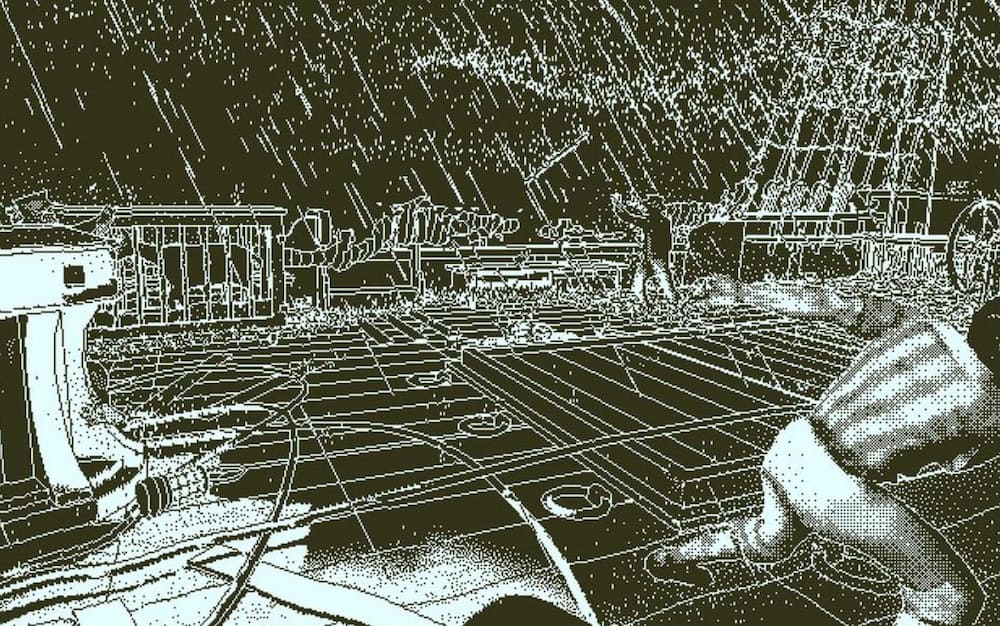
Embracing Minimalism in Design
Games with 1-bit graphics often excel in their minimalist design, both visually and in gameplay. By eliminating extra details, such games are made focused, simple yet refined, and visually impactful experiences.
As an example, the 1 bit game Rogue Invader has a simple black-and-white color design with basic geometric shapes to represent its science fiction theme. This minimalistic method makes it easy for players to understand the visual style of this project and concentrate on its main functions.
By learning and using these experiences, 1-bit game makers can produce visually remarkable projects with interesting gameplay. It can work and the BandurArt team proves it daily.
The Basic Steps to Create a 1 Bit Game From Scratch
Let’s assume you want to create a 1 bit horror game. Where to start and how to proceed? Our professional team can give a few hints for beginners:
1) Choose a graphics editor:
- Adobe Photoshop can handle any complicated graphics work, and it has a special 1-bit color mode that lets you make black-and-white pictures;
- The Aseprite pixel art editor is particularly made for forming 2D sprites and animations, which makes it very good with 1 bit pixel art;
- GIMP is a free and open-source option similar to Photoshop. GIMP also offers a 1-bit color mode and offers many tools for making grayscale graphics;
2) Plan Your Artwork
Before creating your first art, it’s essential to prepare. Think about the game’s theme, location, and artistic style. Make rough sketches on paper or computer to define the primary shapes and compositions. This development stage will allow you to imagine how the final product should look and help in making good choices while creating it.
3) Create Basic Shapes
Start by making the simple shapes that build up your 1-bit visuals. Use geometric figures such as circles, squares, and triangles to show objects, characters, or settings. For instance, a basic character could be made of a head in a circular shape, a body in a rectangular form, and limbs like sticks.
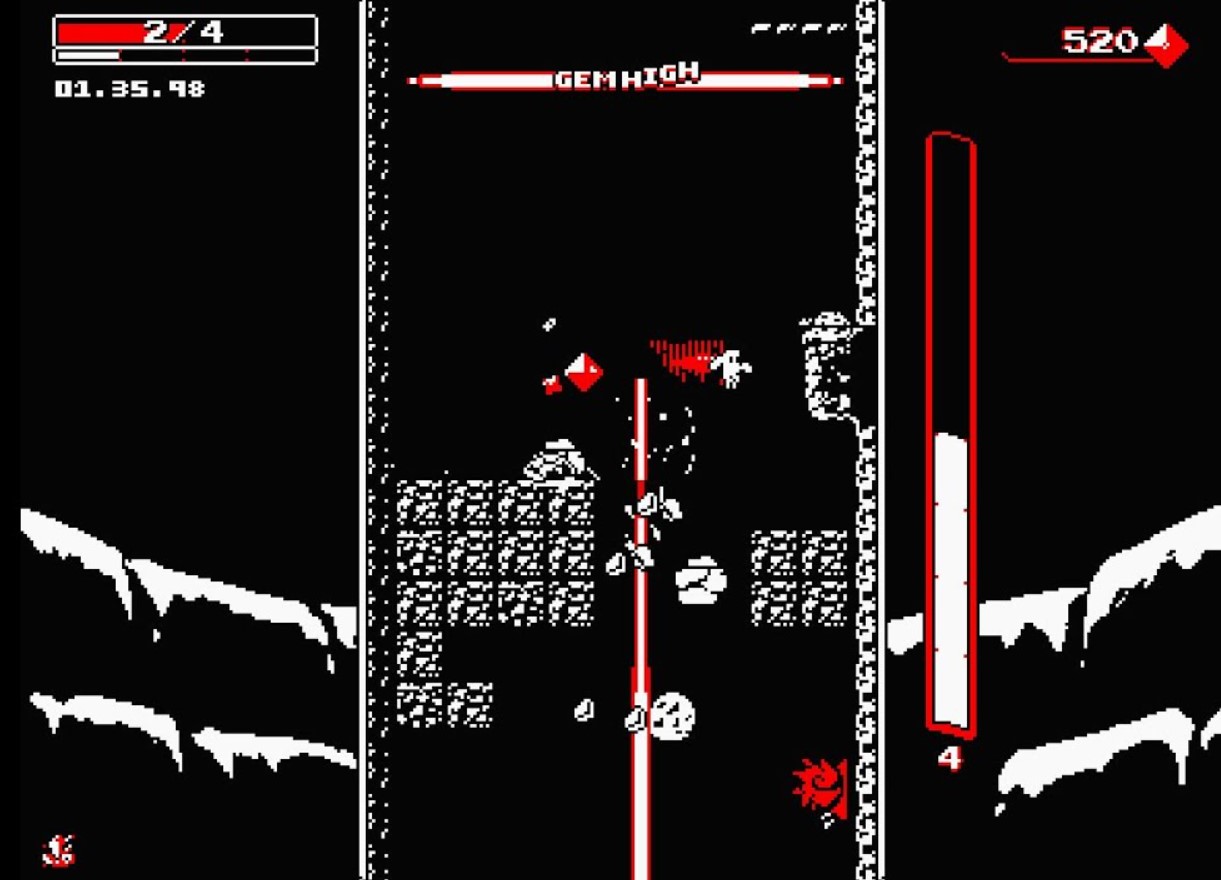
To create a 1-bit tree, you can begin with a rectilinear trunk. Then, use triangular shapes as the in-game branches and leaves. Test out diverse compositions and sizes to achieve variety as well as depth in your design.
4) Add Details and Textures
When the essential shapes are picked, continue by adding details and textures to make your graphics bright. Patterns, lines, or dots can add extra shade, and dimension as well as the visual feast. Remember that each pixel is important in 1-bit graphics. For instance, to create a brick wall, use black and white pixels in a certain order.
5) Add Contrast and Depth
When there is not enough color, contrast becomes very important to add more depth. Use solid black shapes for things that are in front and lighter shades or patterns for the ones that are behind. Such contrast will direct the eye of the player and create a feeling of space.
For example, for a 1 bit platformer game, you can make use of solid black shapes to represent both the player character and platforms. To create the background elements such as mountains or clouds, you may use lighter patterns or outlines.
6) Add Animations
To make 1-bit graphics more distinct, you should add animations. In 1-bit graphic style, the animation is based on the pixel art concept as well. It requires many frames that show small changes in place, form, or arrangement. To “breathe life” into a walking character, make a sequence of frames displaying the limbs in different positions. Use only a few frames (4-6) to keep the animation uncomplicated but impactful.
7) Playtesting and Iteration
After you make your first 1-bit graphics part, it’s very important to playtest the game and get feedback from people who play it. Watch how players interact with your visuals and pay attention if any parts might be confusing or not clear enough to comprehend.
8) Embracing the Aesthetic
The special charm of 1-bit graphics comes from the simple look with retro style. Use this feature to influence the design and mood of your game. Take advantage of 1-bit graphics to create a unified visual representation that makes your game stand out.
9) Experiment with Colors
Typically, 1-bit graphics are depicted in black and white colors. However, some games have tried to use a small color range for more visual variety and depth. Think about using only one accent color to emphasize important parts or reveal different feelings.
To create a 1 bit horror game, consider using deep red as the color for blood and keep most graphics to be black and white. Such careful choice of color can create a strong emotional effect and direct the player’s focus.
10) Collaborate with Other Developers
To make a 1 bit game, you often need to hire or be a part of a team that includes designers, programmers, and sound artists. It is extremely hard to do this on your own. You should work closely with your team to make sure the visuals match well with how the game functions, its story, and audio. Good communication will help to develop a final polished product.
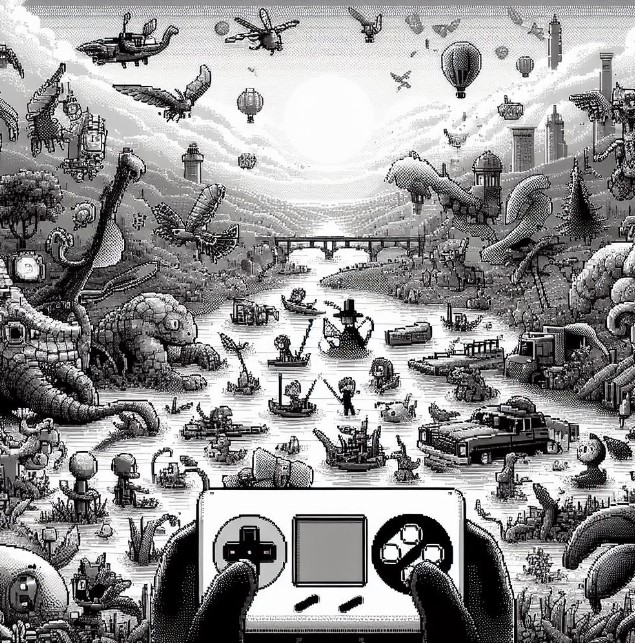
11) Optimize Your Game for Better Performance
A good point about 1-bit graphics is that they have little memory and render quickly. Nevertheless, you should still make sure your graphics are optimized for performance – this becomes even more crucial if you are aiming at low-end tools or web browsers. Look into these methods: sprite sheets, texture atlases as well as compression to decrease the size of files and enhance loading times.
Hopefully, these tools will help you create the first 1 bit game or just understand better how these projects are done. Those who are interested in the development should check one of the helpful YouTube tutorials.
Frequently Asked Questions About 1 Bit Video Game Development
- What are the most common programming languages used by 1-bit game developers?
Most game developers including the BandurArt team use such programming languages as Z80 assembly (Sinclair ZX Spectrum), Lua (PICO-8), and JavaScript (TIC-80) due to their simple syntax. Other popular choices are Unreal Engine 4/5 and Unity. Those who seek non-traditional methods can check the Game Maker Studio 1 bit color courses.
- What is the oldest 1 bit game?
Pong (1972) definitely can be referred to as the first 1-bit game. The term “1-bit” refers to the graphics and display capabilities of the game. In Pong, the graphics consist of simple black-and-white lines and rectangles, without any other shades or colors.
- Where can you play a game with 1 bit pixel art?
You can play 1-bit games on almost any retro and contemporary platform. If you are a fan of retro consoles and old games then choose the ultimate classic platforms –NES, SNES, Spectrum, Sega Genesis, Atari 2600. Those gamers, who prefer playing PC, can find many indie games with monochrome graphics and 1 bit pixel art on Steam.
![]()
The vast audience of contemporary consoles can enjoy playing the new games with 1 bit graphics on PlayStation 4, Xbox One, Xbox Series, PlayStation 5, and Nintendo Switch. Handheld devices and smartphones also have a few monochrome games in their libraries.
Final thoughts
For someone who wants to develop video games for a living or just as a pet project, the challenging 1-bit game development can become a special and satisfying path to expressing creativity. If a developer is ready to accept the problems and possibilities that come with this visual style, they can make really unique games in this highly competitive industry and leave an enduring impression among the fans of retro art in games.
Whether it’s the old-school charm of an unichrome game art or creative thinking required to deal with its limits that draws you towards this area, now is the perfect moment to try out what it has in store for your talents.

